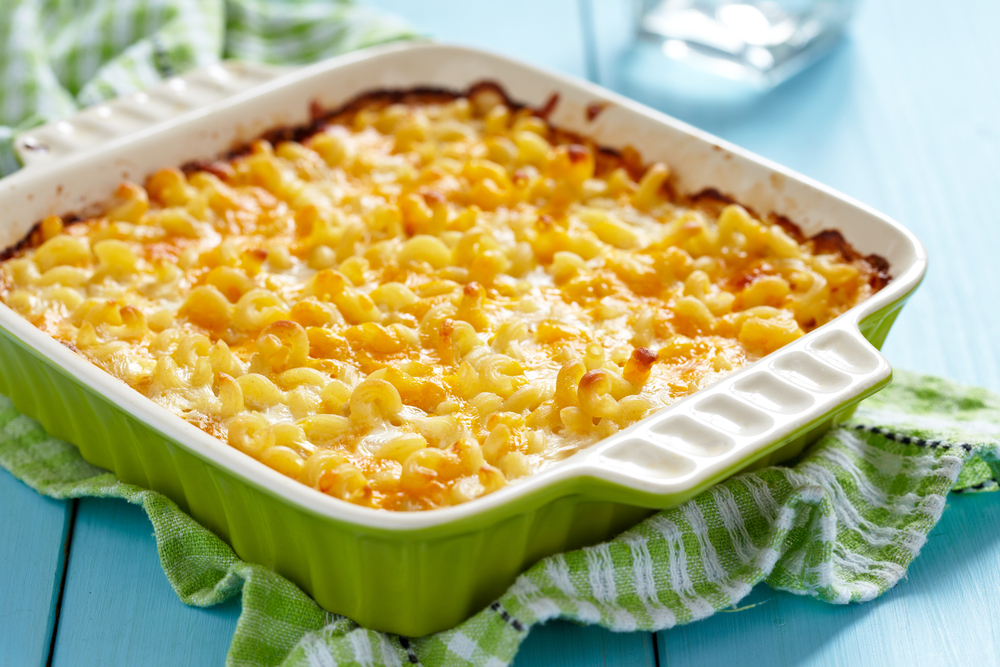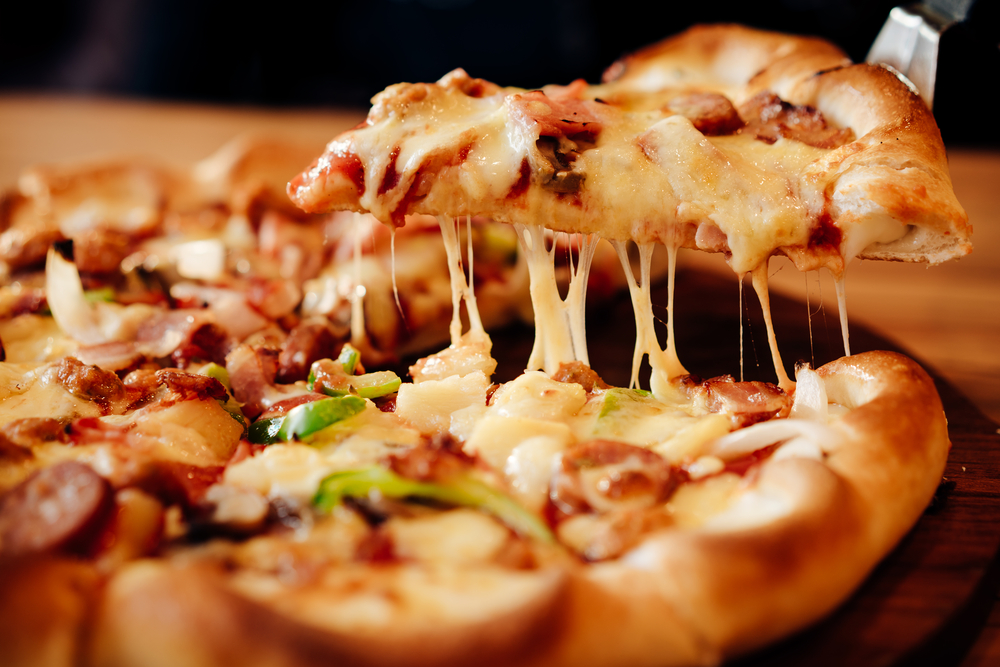As someone who loves mac and cheese, I know that choosing the right noodle can make all the difference. While elbow macaroni is the most popular choice, there are many other pasta options that can elevate your mac and cheese game.
In this article, I will explore the best noodles for mac and cheese and provide tips on how to create the perfect dish.
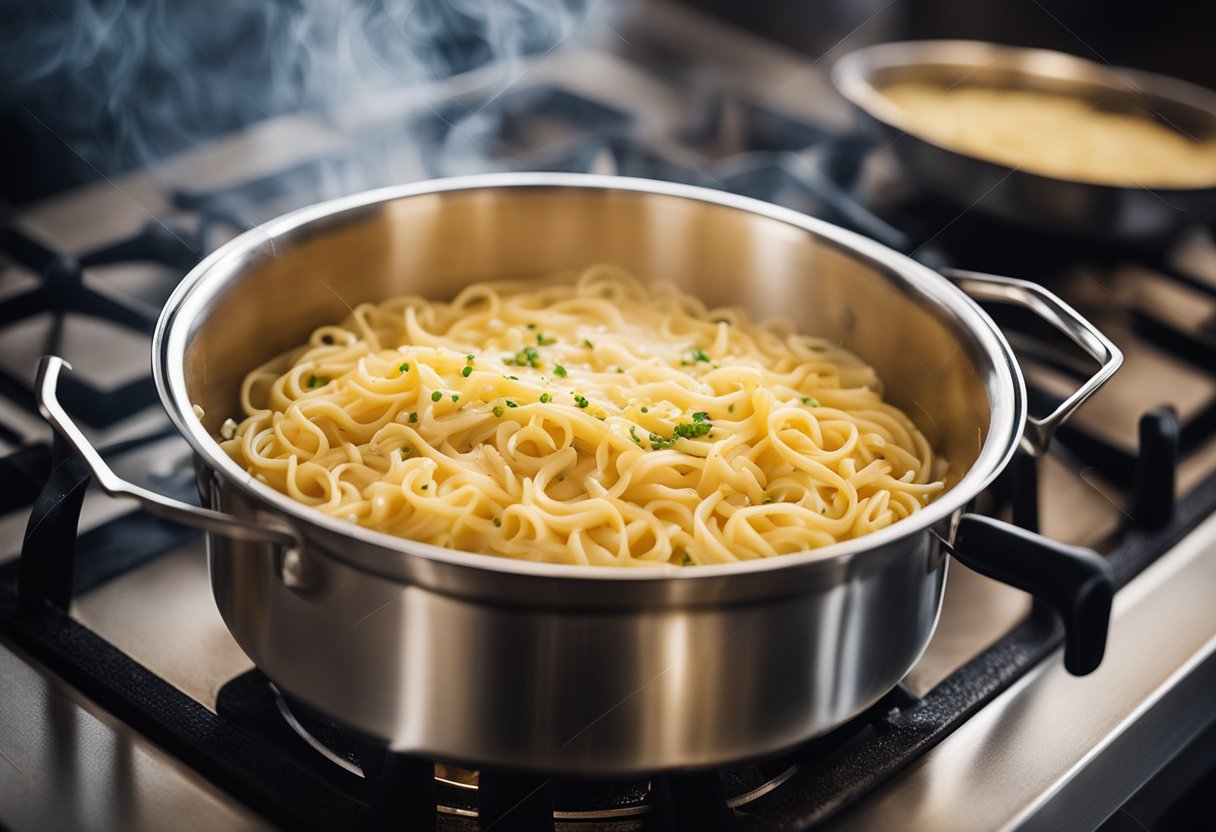
When it comes to mac and cheese, the pasta you choose can affect the overall texture and flavor of the dish. Some noodles are better at holding onto sauce, while others have a unique shape that adds an extra layer of texture.
Additionally, different pasta shapes can change the way the cheese sauce coats the noodles, making each bite a unique experience. By understanding the different pasta options available, you can create a mac and cheese that is perfectly suited to your taste buds.
In this article, I will provide an in-depth look at the best noodles for mac and cheese. From traditional elbow macaroni to lesser-known options like cavatappi and fusilli, I will explore the pros and cons of each pasta shape.
Additionally, I will provide tips on how to cook your noodles to perfection and how to create a cheese sauce that is creamy and delicious. So, let’s dive in and discover the best noodles for mac and cheese.
Key Takeaways
- Choosing the right noodle can make a big difference in the texture and flavor of your mac and cheese.
- Different pasta shapes can affect the way the cheese sauce coats the noodles, creating a unique eating experience.
- By understanding the best noodles for mac and cheese and how to cook them properly, you can create a delicious and unforgettable dish.
Understanding Mac and Cheese

As a lover of comfort food, mac and cheese is one of my all-time favorites. This classic dish has been a staple in American cuisine for decades, and for good reason. It’s creamy, cheesy, and satisfying, making it the perfect comfort food.
Mac and cheese is typically made with macaroni noodles and a cheese sauce. The cheese sauce is usually made with a combination of milk, butter, and cheese.
There are many variations of mac and cheese, including homemade mac and cheese, boxed mac and cheese, and mac and cheese recipes that include additional ingredients like bacon, breadcrumbs, or vegetables.
One of the great things about mac and cheese is that it’s easy to make. You can whip up a batch of homemade mac and cheese in just a few simple steps.
All you need is some macaroni noodles, cheese, milk, and butter. You can also experiment with different types of cheese to create your own unique flavor.
When it comes to choosing the best noodles for mac and cheese, there are a few things to consider. One of the most important factors is the shape of the noodle.
Elbow macaroni is the most common type of noodle used in mac and cheese, but there are other options as well. Some people prefer to use shells, fusilli, or penne noodles.
Another important factor to consider is the texture of the noodle. You want a noodle that will hold onto the cheese sauce, but not become mushy or overcooked. It’s best to cook the noodles al dente, so they have a slightly firm texture.
Overall, mac and cheese is a classic comfort food that is easy to make and always satisfying. Whether you prefer homemade mac and cheese or boxed mac and cheese, there are plenty of options to choose from.
Just be sure to choose the best noodles for your recipe to ensure the perfect texture and flavor.
Choosing the Right Pasta
As any mac and cheese lover knows, the type of pasta you use can make or break the dish. Here are some of the most popular pasta shapes for mac and cheese, along with their unique characteristics and how they affect the overall dish.
Elbow Macaroni
Elbow macaroni is the most classic pasta shape for mac and cheese. Its small size and curved shape make it perfect for catching and holding onto the cheese sauce.
Plus, it cooks quickly and evenly, making it a reliable choice for any mac and cheese recipe.
Cavatappi
Cavatappi is a corkscrew-shaped pasta that is perfect for mac and cheese. Its ridged surface helps to hold onto the cheese sauce, and its unique shape adds a fun twist to the dish.
Plus, the hollow center of the pasta allows the cheese sauce to seep inside, giving each bite a burst of flavor.
Penne
Penne is a tube-shaped pasta that is a great choice for mac and cheese. Its shape allows the cheese sauce to get inside, and its ridges help to hold onto the sauce.
Plus, the larger size of the pasta means that each bite is more substantial, making for a heartier dish.
Ziti
Ziti is a tube-shaped pasta that is similar to penne, but with a larger diameter. Its shape and size make it perfect for holding onto the cheese sauce, and its hollow center allows the sauce to seep inside. Plus, the larger size of the pasta means that it is more filling and satisfying.
Fusilli
Fusilli is a spiral-shaped pasta that is perfect for mac and cheese. Its shape and ridges help to hold onto the cheese sauce, and its unique shape adds a fun twist to the dish.
Plus, the hollow center of the pasta allows the cheese sauce to seep inside, giving each bite a burst of flavor.
Spaghetti
While spaghetti is not a traditional pasta shape for mac and cheese, it can still work well in certain recipes. Its long, thin shape means that it can be easily mixed with the cheese sauce, and its texture adds a unique element to the dish.
Shells
Shell-shaped pasta, also known as conchiglie, is a popular choice for mac and cheese. Its unique shape and ridges help to hold onto the cheese sauce, and its hollow center allows the sauce to seep inside.
Plus, the large size of the pasta means that each bite is more substantial and satisfying.
Farfalle
Farfalle, also known as bow ties, is a pasta shape that is perfect for mac and cheese. Its unique shape and ridges help to hold onto the cheese sauce, and its size means that each bite is more substantial.
Plus, the fun shape adds a playful element to the dish.
Fettuccine
Fettuccine is a long, flat pasta that is not traditionally used in mac and cheese. However, it can still work well in certain recipes. Its shape allows it to be easily mixed with the cheese sauce, and its texture adds a unique element to the dish.
Rotini
Rotini is a corkscrew-shaped pasta that is perfect for mac and cheese. Its unique shape and ridges help to hold onto the cheese sauce, and its hollow center allows the sauce to seep inside. Plus, the fun shape adds a playful element to the dish.
Linguine
Linguine is a long, flat pasta that is not traditionally used in mac and cheese. However, it can still work well in certain recipes. Its shape allows it to be easily mixed with the cheese sauce, and its texture adds a unique element to the dish.
Campanelle
Campanelle is a cone-shaped pasta with ruffled edges that is perfect for mac and cheese. Its unique shape and ridges help to hold onto the cheese sauce, and its size means that each bite is more substantial. Plus, the fun shape adds a playful element to the dish.
Conchiglie
Conchiglie, also known as shells, is a popular choice for mac and cheese. Its unique shape and ridges help to hold onto the cheese sauce, and its hollow center allows the sauce to seep inside.
Plus, the large size of the pasta means that each bite is more substantial and satisfying.
Cellentani
Cellentani is a corkscrew-shaped pasta that is perfect for mac and cheese. Its unique shape and ridges help to hold onto the cheese sauce, and its hollow center allows the sauce to seep inside.
Plus, the fun shape adds a playful element to the dish.
Amori
Amori is a heart-shaped pasta that is perfect for mac and cheese. Its unique shape and ridges help to hold onto the cheese sauce, and its size means that each bite is more substantial. Plus, the
Cheese Selection
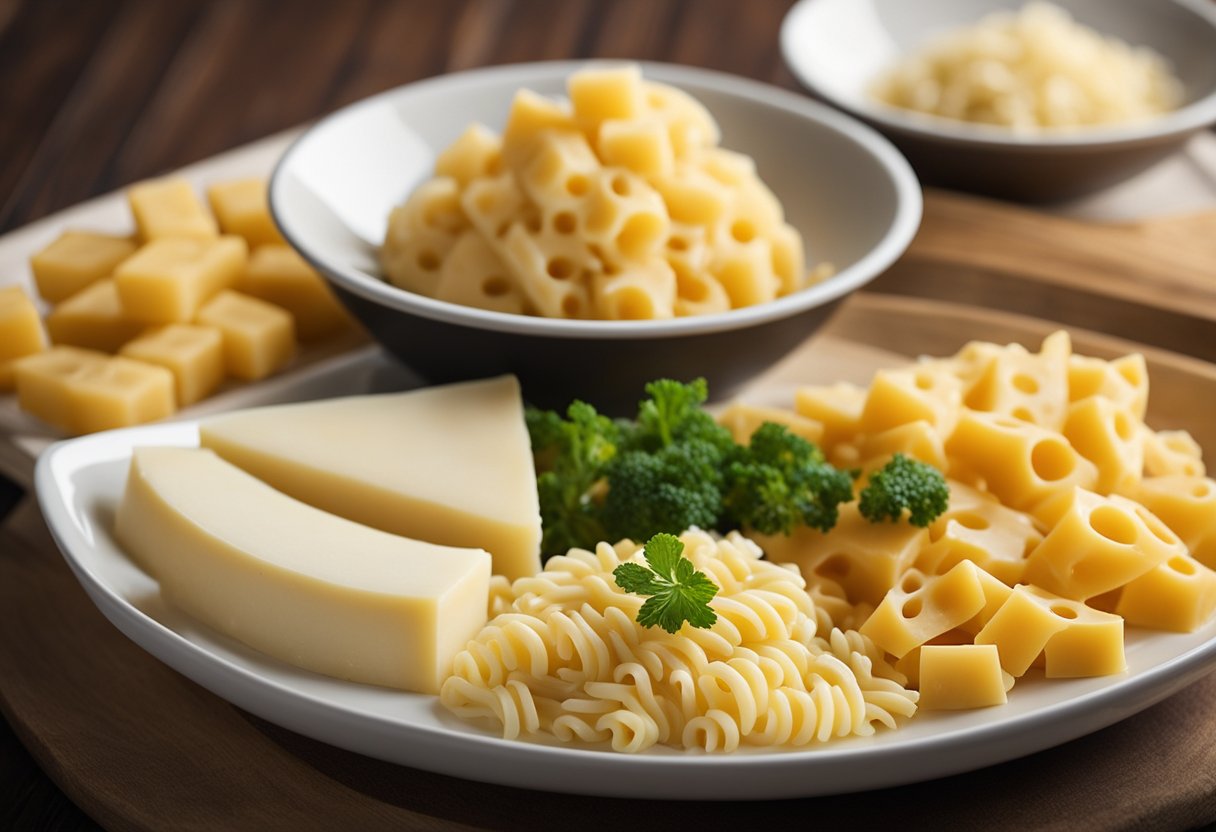
When it comes to making the perfect mac and cheese, the cheese selection is critical. Here are some of the best cheeses to use for mac and cheese:
Cheddar
Cheddar cheese is the most popular cheese for mac and cheese. It has a sharp, tangy flavor that pairs well with the creaminess of the sauce. It also melts well, making it perfect for mac and cheese.
Gruyere
Gruyere cheese is another excellent choice for mac and cheese. It has a nutty, slightly sweet flavor that complements the pasta and sauce. It melts smoothly, making it perfect for a creamy mac and cheese.
Mozzarella
Mozzarella cheese is a great choice for mac and cheese if you want a milder flavor. It has a creamy, milky taste that is perfect for a lighter mac and cheese. It also melts well, making it perfect for a creamy sauce.
American
American cheese is a classic choice for mac and cheese. It has a mild, creamy flavor that melts well, making it perfect for a smooth and creamy sauce. It is also a great choice for a more kid-friendly mac and cheese.
Parmesan
Parmesan cheese is a great addition to mac and cheese. It has a sharp, nutty flavor that adds depth to the sauce. It also adds a nice texture to the dish, making it perfect for a more sophisticated mac and cheese.
Gouda
Gouda cheese is a great choice for a more flavorful mac and cheese. It has a smoky, nutty flavor that adds depth to the dish. It also melts well, making it perfect for a creamy sauce.
Monterey Jack
Monterey Jack cheese is a mild, creamy cheese that melts well, making it perfect for a smooth and creamy sauce. It has a mild, buttery flavor that pairs well with the pasta and sauce.
When selecting cheese for mac and cheese, it is important to choose a cheese that melts well and has a flavor that complements the pasta and sauce. Shredded cheese is the easiest to work with, but you can also use block cheese and grate it yourself.
Creating the Perfect Sauce
When it comes to mac and cheese, the sauce is the star of the show. A creamy, cheesy sauce is what makes this dish so comforting and delicious.
Here are some tips to help you create the perfect sauce:
- Start with a roux: A roux is a mixture of butter and flour that is cooked together to create a thick paste. This paste is the base of the sauce and helps to thicken it. Use all-purpose flour for the best results.
- Use milk or cream: The liquid you use in your sauce will determine how creamy it is. Whole milk or cream will give you the creamiest results, but you can use lower-fat milk if you prefer. If you’re looking for a dairy-free option, you can use almond milk or another non-dairy milk.
- Add the cheese slowly: Adding the cheese all at once can cause it to clump and create a grainy texture. Add it slowly, stirring constantly, until it has melted and the sauce is smooth.
- Season well: A good mac and cheese sauce should be well-seasoned. Add salt and pepper to taste, and consider adding other seasonings like garlic powder or paprika for extra flavor.
- Use high-quality cheese: The cheese you use in your sauce will have a big impact on the final result. Use a high-quality cheddar or a blend of cheeses for the best flavor.
- Don’t overcook the sauce: Overcooking the sauce can cause it to break and become greasy. Once the cheese has melted and the sauce is smooth, remove it from the heat and serve immediately.
By following these tips, you can create a delicious, creamy mac and cheese sauce that will have everyone coming back for seconds.
Baking and Reheating Tips
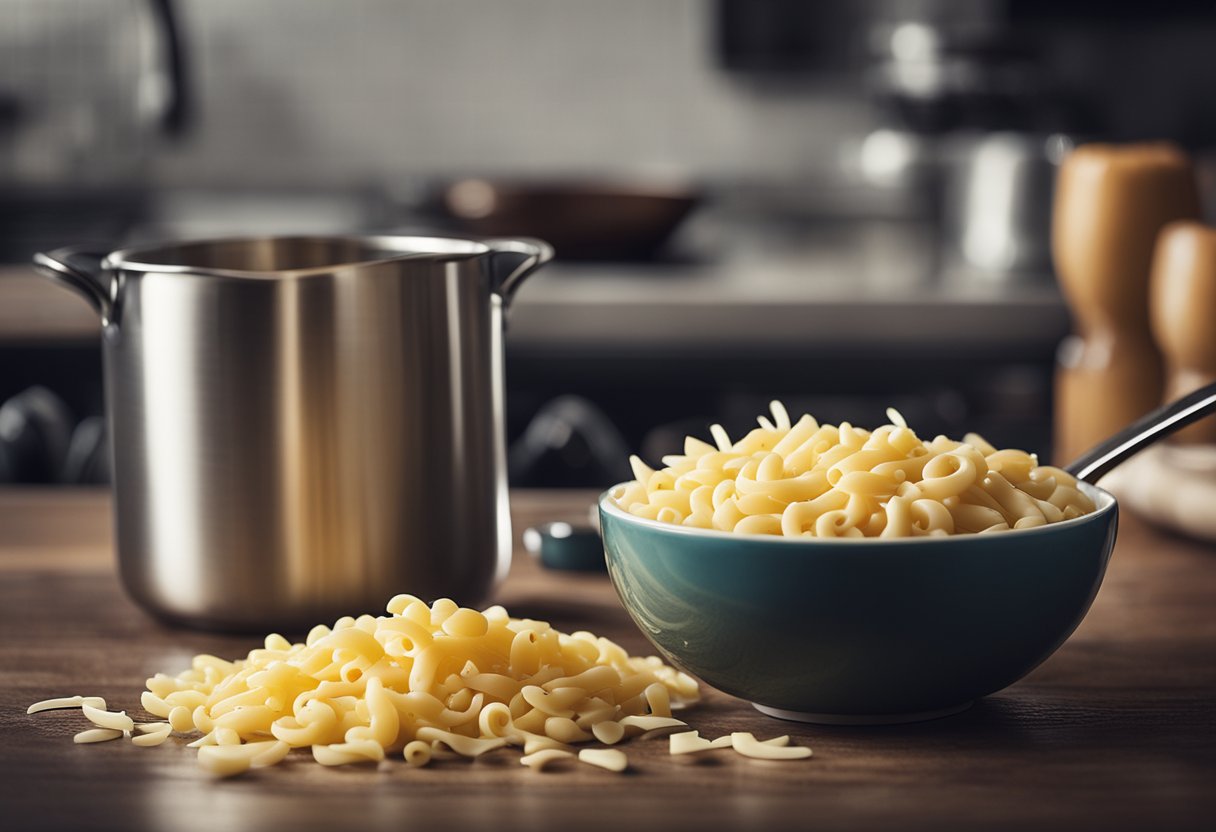
When it comes to mac and cheese, there are a few tips I always keep in mind for baking and reheating. Whether you’re preparing a baked mac and cheese or reheating leftovers, these tips can help ensure your mac and cheese comes out perfectly every time.
Baking Tips
If you’re making baked mac and cheese, there are a few things you can do to make sure it turns out delicious. First, be sure to use a baking dish or casserole that is the right size for your recipe.
If your dish is too small, the mac and cheese will be too thick and may not cook evenly. If your dish is too large, the mac and cheese may dry out.
Next, consider adding breadcrumbs to your mac and cheese before baking. This can give your dish a nice crispy topping that is golden brown and delicious.
To make breadcrumbs, simply pulse a few slices of bread in a food processor until they are finely ground. Then, sprinkle the breadcrumbs over the top of your mac and cheese before baking.
Finally, cover your baking dish with aluminum foil while it bakes. This will help trap in the heat and moisture, ensuring that your mac and cheese cooks evenly and stays creamy.
Reheating Tips
If you have leftover mac and cheese that you want to reheat, there are a few things you can do to make sure it stays delicious.
First, transfer your mac and cheese to an airtight container before storing it in the fridge. This will help prevent it from drying out.
When you’re ready to reheat your mac and cheese, add a tablespoon of milk per cup of pasta and gently mix it in.
This will help restore some of the creaminess that may have been lost during storage. Then, cover your container with a lid or microwave-safe wrap, leaving one corner open to vent steam.
When microwaving your mac and cheese, use medium power and heat for one minute at a time, stirring in between.
This will help ensure that your mac and cheese heats evenly and doesn’t dry out. If you prefer to reheat your mac and cheese in the oven, preheat your oven to 350 degrees F and bake for 20-30 minutes, or until heated through.
By following these baking and reheating tips, you can enjoy delicious mac and cheese every time.
Enhancing the Texture and Flavor
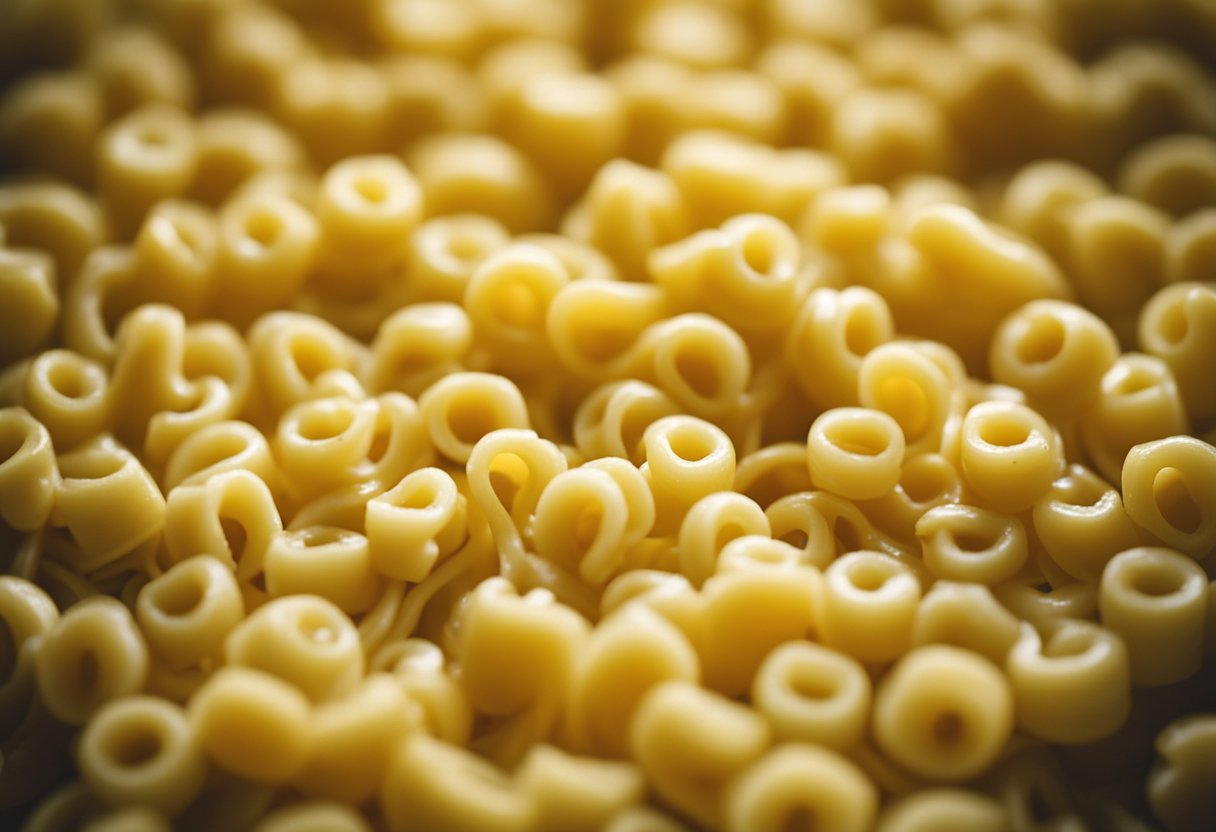
When it comes to mac and cheese, the texture and flavor are key to making a delicious dish.
Here are some tips on how to enhance both:
- Texture: Achieving the perfect texture can be a challenge. You want your noodles to be cooked just right, not too mushy or too hard. I recommend cooking your noodles al dente, which means they are cooked but still have a bit of a chewy texture. This will give your mac and cheese a nice bite. Also, try using noodles with nooks and crannies, such as elbow macaroni or corkscrewed fusilli. These noodles will hold onto the cheese sauce, giving your dish a more chewy texture.
- Flavor: To enhance the flavor of your mac and cheese, consider adding some extra ingredients to your cheese sauce. Try adding cooked bacon, olive oil, or even mashed potatoes to your cheese sauce. These ingredients will add depth and richness to your sauce, making it even more delicious. You can also experiment with different types of cheeses to create a unique flavor profile. I recommend using a combination of gooey cheeses, such as cheddar and mozzarella, to create a rich and creamy cheese sauce.
- Toppings: Adding toppings to your mac and cheese can also enhance the texture and flavor. Try topping your mac and cheese with breadcrumbs, which will give it a nice crunch. You can also top it with cooked bacon, green onions, or even jalapenos for a bit of spice. Another great topping is melted cheese, which will add even more creaminess to your dish.
- Leftovers: If you have leftover mac and cheese, don’t throw it away! Leftover mac and cheese can be reheated in the microwave or on the stovetop. To make it even more delicious, add a bit of milk to the dish to help rehydrate the noodles and cheese sauce. You can also add some extra cheese to thicken the sauce.
By following these tips, you can enhance the texture and flavor of your mac and cheese. Whether you prefer a gooey cheese sauce or a more chewy texture, these tips will help you create a delicious dish that everyone will love.
Serving Suggestions

When it comes to serving mac and cheese, there are a variety of ways to make it a delicious and satisfying meal or side dish.
Here are a few serving suggestions to get you started:
- As a Meal: Mac and cheese can be a hearty and filling main dish on its own. Serve it with a side salad or some garlic bread for a complete meal. You can also add some protein to your mac and cheese, such as cooked meatloaf or chicken , to make it even more satisfying.
- As a Side Dish: Mac and cheese also makes a great side dish for a variety of meals. It pairs well with grilled chicken, steak, or fish. You can also serve it alongside Italian dishes like lasagna or spaghetti for a comforting and indulgent meal.
- For Leftovers: Mac and cheese is a great dish to make in advance and enjoy as leftovers throughout the week. You can reheat it in the microwave or oven for a quick and easy meal.
- Toppings: To add some extra flavor and texture to your mac and cheese, try adding some toppings. Crumbled bacon, breadcrumbs, or chopped herbs like parsley or chives can all be delicious additions.
Overall, mac and cheese is a versatile and satisfying dish that can be enjoyed in a variety of ways. Whether you’re serving it as a meal or a side dish, there are plenty of ways to make it your own.
Storing Your Mac and Cheese
When it comes to storing your leftover mac and cheese, there are a few things to keep in mind to ensure that it stays fresh and delicious. Here are some tips on how to store your mac and cheese properly:
Refrigerating Leftovers
If you have leftover mac and cheese that you want to save for later, the best way to store it is in an airtight container in the refrigerator.
Make sure that the mac and cheese has cooled down completely before you put it in the container. This will help prevent condensation from forming, which can make the mac and cheese soggy.
When you’re ready to eat your leftovers, simply reheat them in the microwave or on the stovetop. If the mac and cheese seems a little dry, you can add a splash of milk to help bring back some of the creaminess.
Related post: What to Serve with Burritos
Freezing Your Mac and Cheese
If you have a lot of leftover mac and cheese and you don’t think you’ll be able to eat it all within a few days, you can freeze it for later.
To freeze mac and cheese, transfer it to an airtight container or a freezer bag. Make sure to label the container or bag with the date so you know when you put it in the freezer.
When you’re ready to eat your frozen mac and cheese, you can either thaw it overnight in the refrigerator or reheat it straight from the freezer.
To reheat frozen mac and cheese, transfer it to an oven-safe dish and cover it with foil. Bake it at 350°F for about 20-30 minutes, or until it’s heated through.
How Long Can You Store Mac and Cheese?
In general, you can store mac and cheese in the refrigerator for up to 3-4 days. If you want to keep it for longer than that, you should freeze it. Frozen mac and cheese can last for up to 2-3 months in the freezer.
Remember to always use your best judgment when it comes to storing and eating leftovers. If something smells or looks off, it’s better to be safe than sorry and throw it out.
Frequently Asked Questions
What are some good pasta shapes for mac and cheese?
Some good pasta shapes for mac and cheese include elbow macaroni, cavatappi, shells, and fusilli. These shapes hold the cheese sauce well and provide a nice texture to the dish.
What is a good substitute for elbow macaroni in mac and cheese?
If you don’t have elbow macaroni, you can substitute it with other pasta shapes like cavatappi, shells, or fusilli. These shapes have a similar texture and are great for holding the cheese sauce.
What are the most popular types of pasta used in mac and cheese?
The most popular types of pasta used in mac and cheese are elbow macaroni, cavatappi, and shells. These shapes are commonly used in mac and cheese recipes and work well with the cheese sauce.
Can you use straight macaroni pasta for mac and cheese?
Yes, you can use straight macaroni pasta for mac and cheese. Straight macaroni has a similar texture to elbow macaroni and works well with the cheese sauce.
What kind of pasta works best for a dish like macaroni and cheese?
Pasta shapes that are short and have ridges work best for a dish like macaroni and cheese. These shapes hold the cheese sauce well and provide a nice texture to the dish.
What are the benefits of using cavatappi pasta for mac and cheese?
Cavatappi pasta has a spiral shape that holds the cheese sauce well and provides a nice texture to the dish. It also has a larger surface area than elbow macaroni, which allows it to absorb more cheese sauce.




